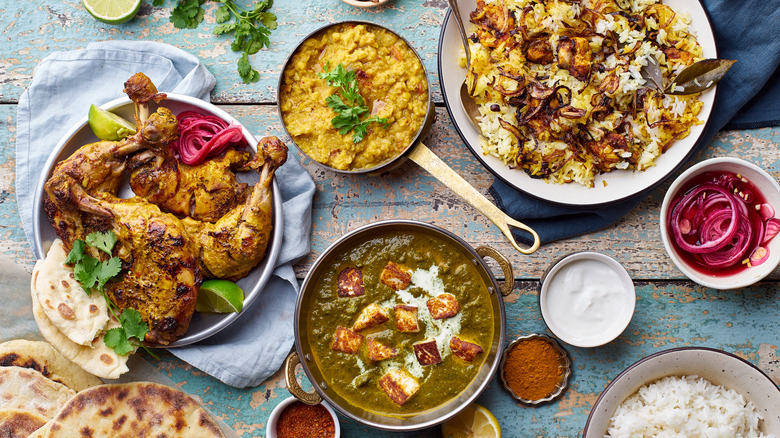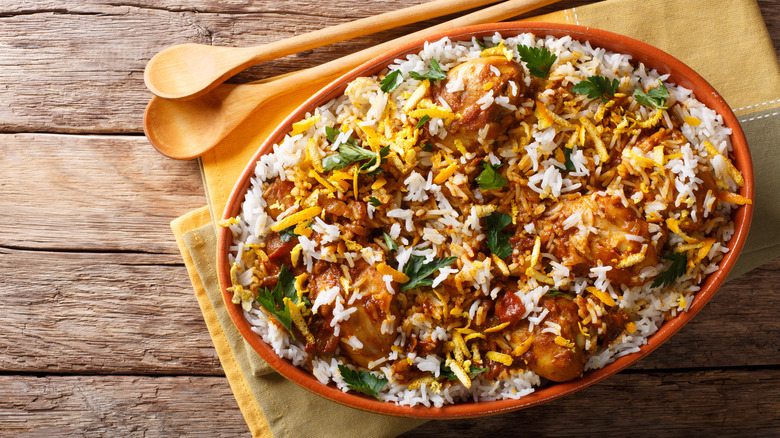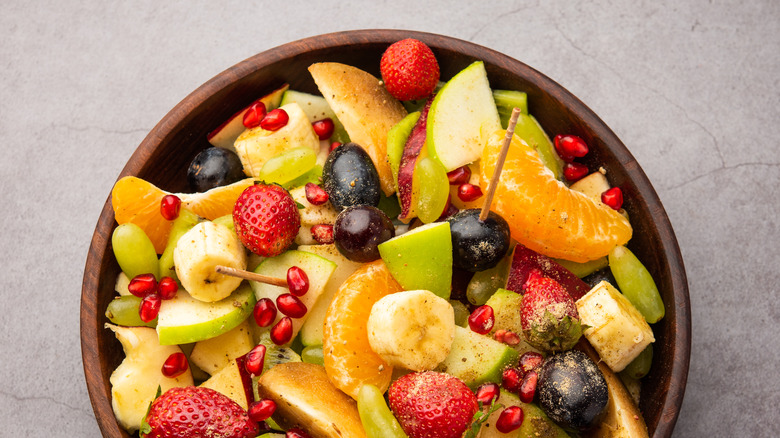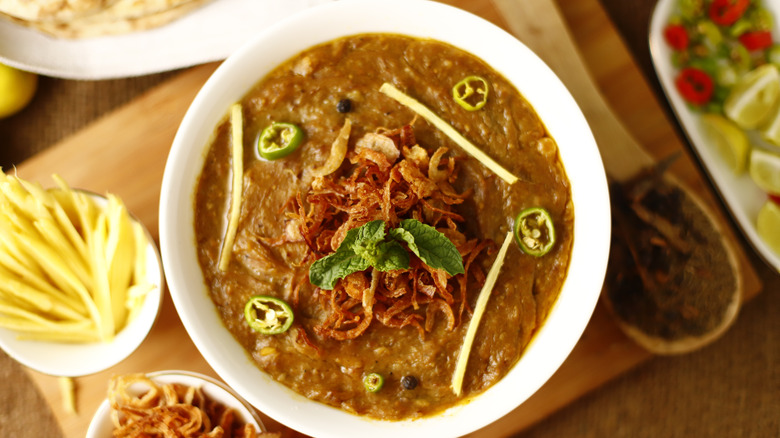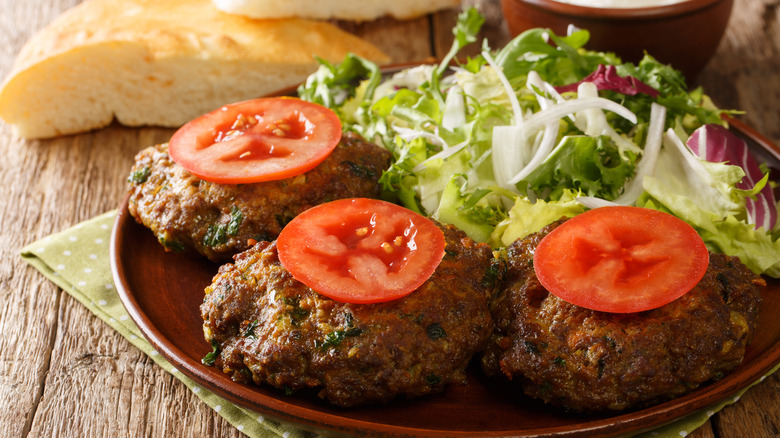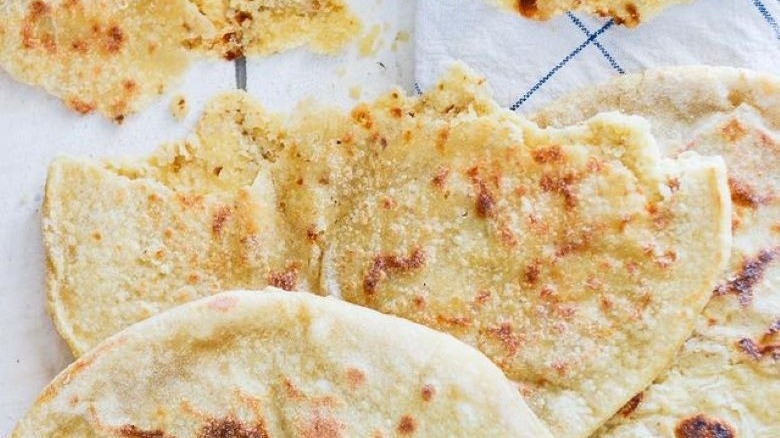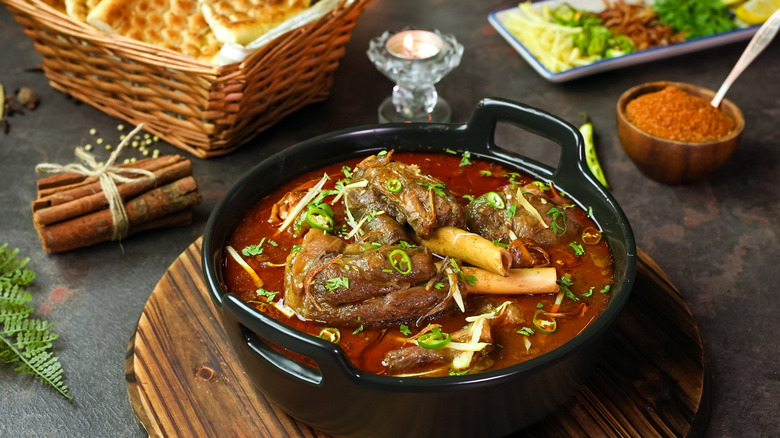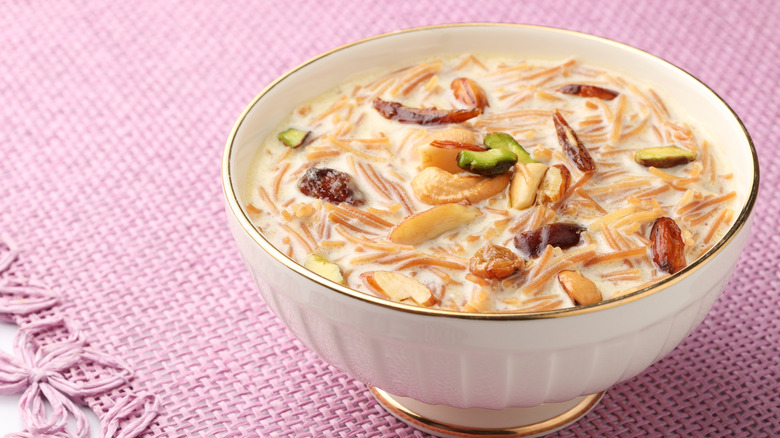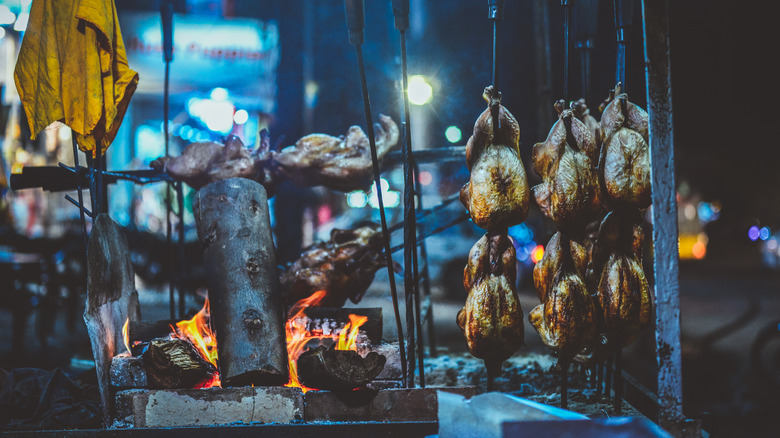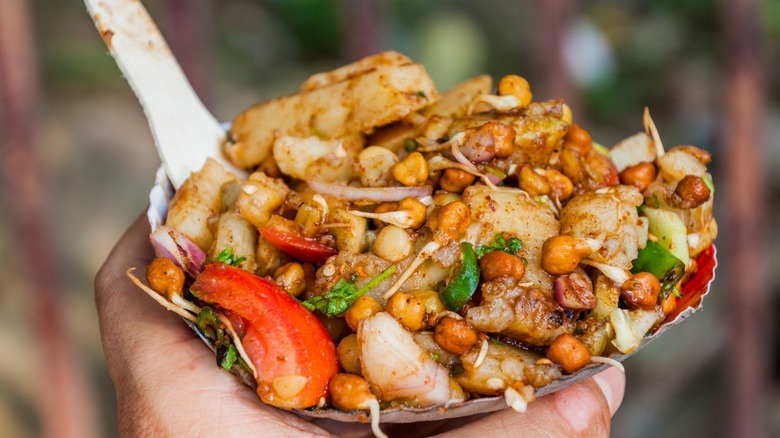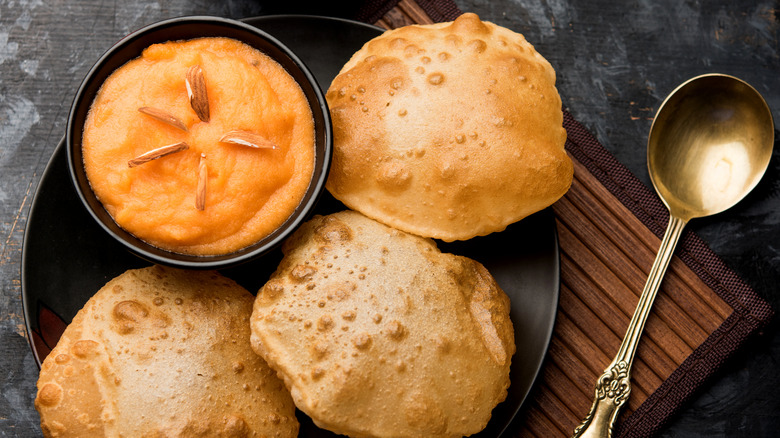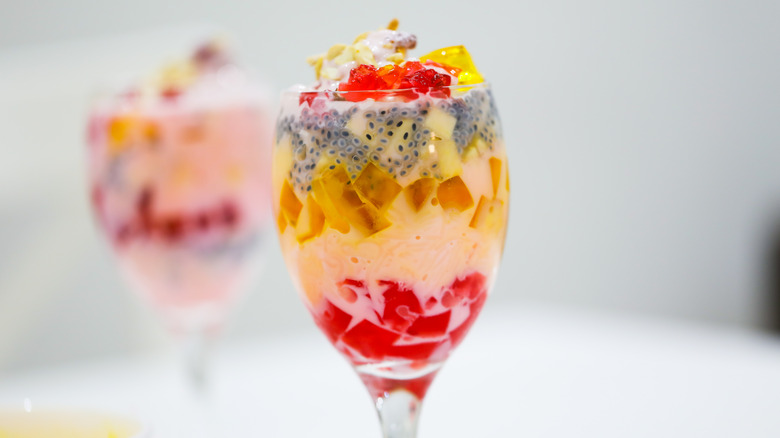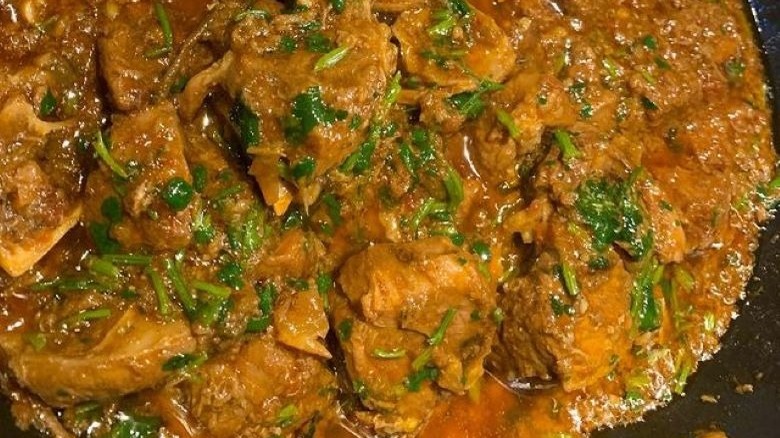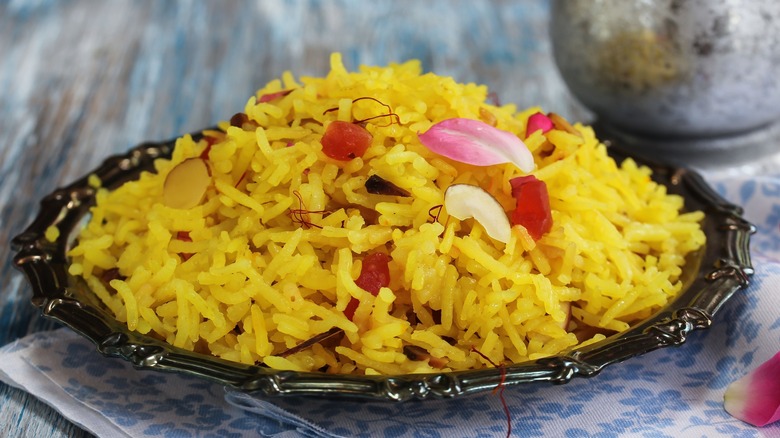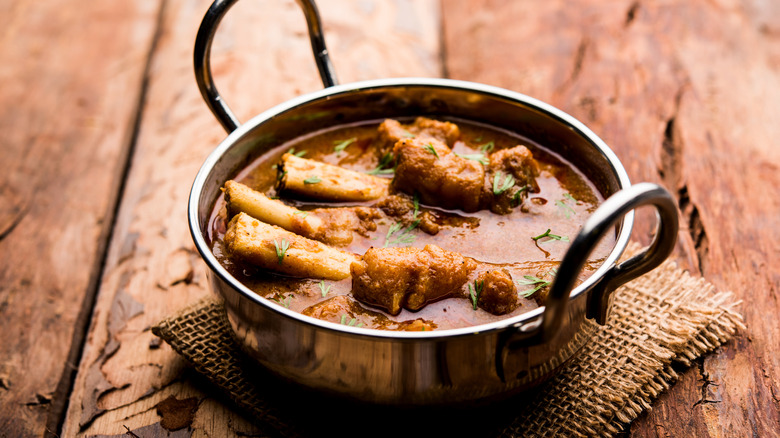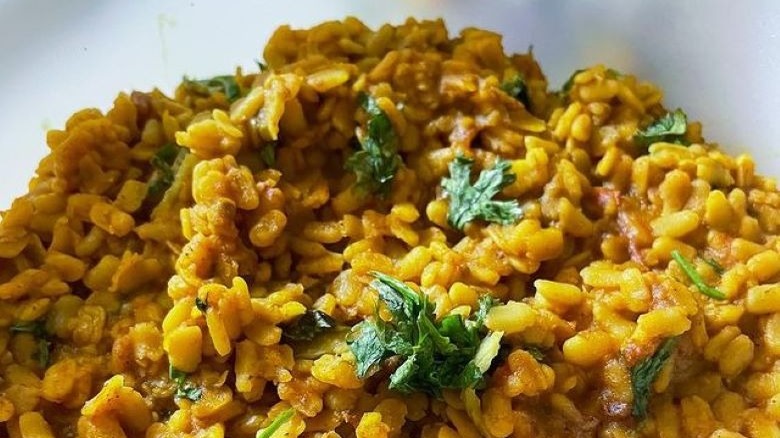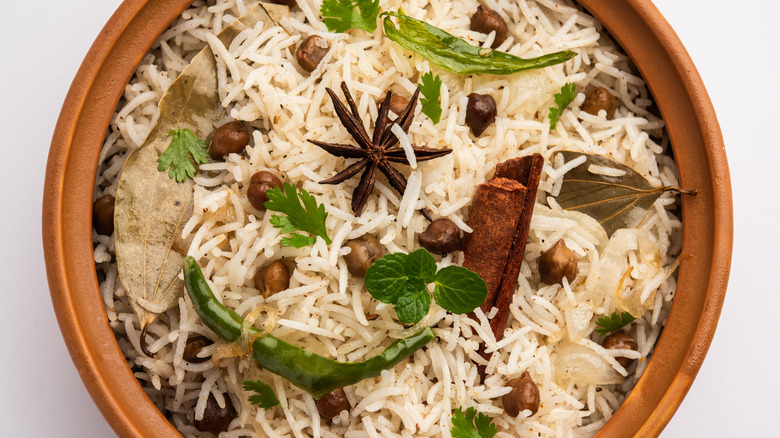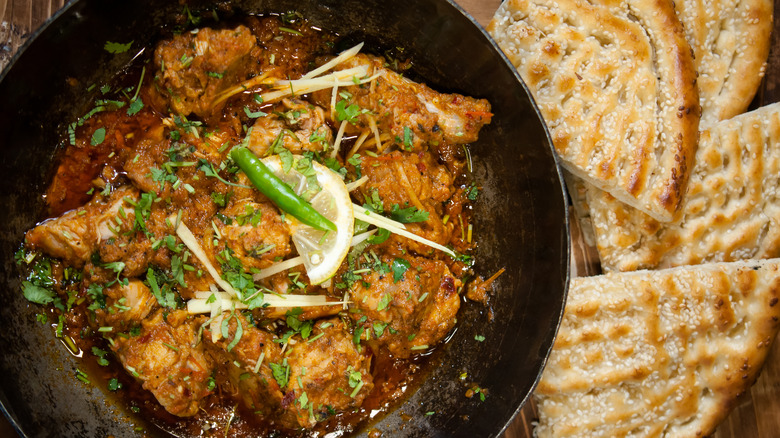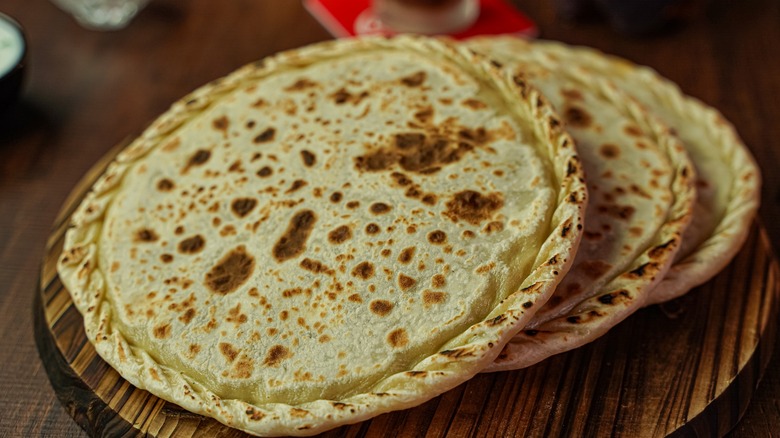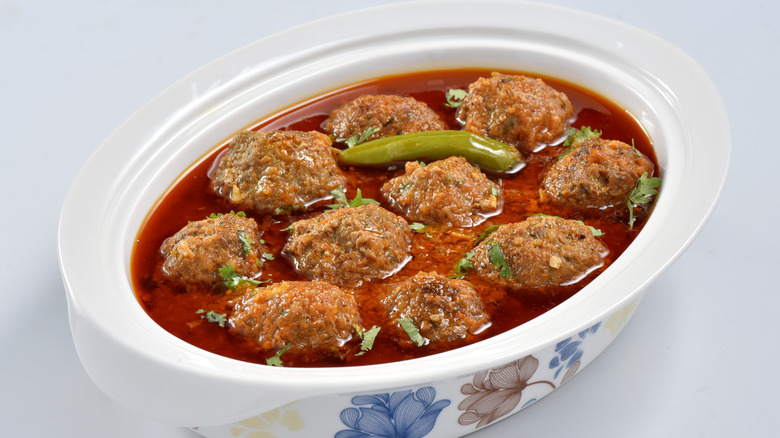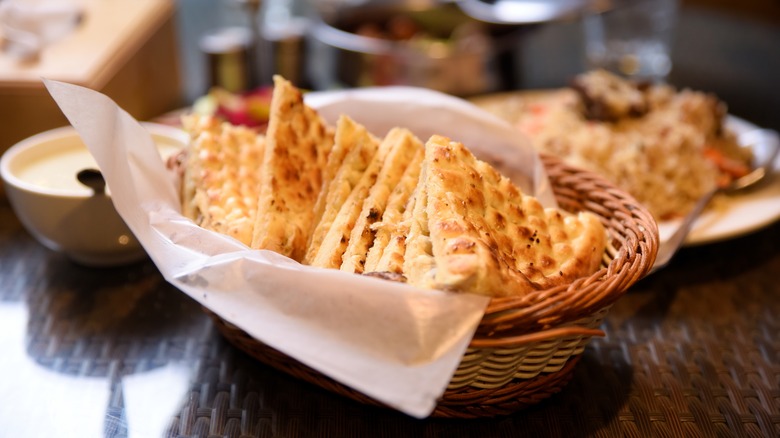20 Traditional Pakistani Dishes Everyone Needs To Try Once
Pakistan, one of the world's most populous countries, is a relatively unknown destination for most food lovers. Yet, underneath the surface lies a wealth of beautiful landscapes, rich cultural heritage, and over 70 languages (via Translators without Borders), all of which inform the country's extensive food culture. Oft overshadowed by the world-renowned dishes of its neighbor, India, Pakistani cuisine shares many similarities — hearty, spicy, aromatic — because, until the partition of India in 1947, the British Raj ruled both countries under one name, according to The New Yorker. Pakistani cuisine also finds influence in the centuries-long occupation of the Mughal empire, which brought foods from Turkey, Uzbekistan, and Iran to its shores. In the modern era, remnants of history remain in many recipes, while some have adapted and changed over time.
Perhaps more than any other factor, religion impacts the diet here. Per Every Culture, about 95% of the population adheres to Islam, meaning that you won't find pork (or its derivatives) or alcohol throughout the country. However, compared to the bordering Indian denizens, Pakistani people consume a lot of meat; most dishes are made with lamb, goat, beef, or chicken, although pulses are regularly enjoyed. Food is also celebratory; in festivals such as Ramadan, observers fast through the day and then feast at night.
From city street food to the mountain tribe's mainstays, hot and tangy meat curries to succulent kebabs and nutty desserts, let's tuck into this amazing cuisine.
Sindhi biryani
All other rice dishes pale in comparison to the biryani. Fluffy basmati rice is crucial, layered between yogurt-marinated meats, tangy tomato gravy, saffron milk, fresh mint, whole green chilis, and dried plums. While biryani appears in many versions across South Asia, the moniker is Persian: birinj biriyan, meaning fried rice (via BBC).
An indulgent dish once reserved for royals, Sindhi biryani, originating from the south-eastern province of Sindh, is now savored on feast days like weddings and Eid al-Fitr. It is of the pakki variety — meaning that the ingredients are pre-cooked, then layered in a pot, sealed, and slowly cooked on an open fire (on dum). It's spicier than its counterparts, with a pungent and peppery taste, alongside zesty sourness from fresh yogurt and dried plums introducing complex plays of spicy-sour notes.
Fruit chaat
You may be familiar with fruit salad, but have you heard of fruit chaat? This Pakistani specialty uses local fruits such as guava, mango, pomegranate, citrus, grapes, apples, bananas, and plums, amongst many more. The fruits are cut into small, bite-sized pieces and soaked in orange juice to make them exceptionally sweet and juicy. However, what makes fruit chaat stand out from a typical fruit salad is a sprinkle of chaat masala and a dash of sugar. The chaat masala spice blend is tangy, sour, and spicy, so the fruits take on a much deeper depth of flavor.
Due to its refreshing nature, you'll find fruit chaat at every iftar feast (the sundown banquet after fasting during Ramadan). In summer, street food carts laden with fresh fruits will offer small plates of fruit chaat as nibbles.
Haleem
Haleem is perhaps one of the most eminent dishes associated with Muslim communities across Pakistan, India, and Bangladesh. It's a unique dish made by slow-cooking wheat (or barley), meat (beef, mutton, or goat), and lentils with copious amounts of ghee, spices, rose petals, and nuts until richly fragrant and thick. Once garnished with julienned ginger, crispy caramelized onions, and zesty cilantro, it's irresistible to those who know its delights.
This nutritious and hearty dish has a lengthy history. It originated in Iran, but haleem — as we would recognize it — arose in Hyderabad, India, during the reign of the sixth Nizam, Mahbub Ali Khan (per Brown History). Later, Muslims fleeing India for Pakistan during partition would bring the dish to Karachi, where it still enjoys much popularity today.
Chapli kebab
No kebab shops in America can compare to the juicy, succulent, and crispy chapli kebab straight off the skillets of Peshawari street vendors. Imagine tender minced beef mince mixed with tomatoes, onions, tangy pomegranate seeds, green chili peppers, citrusy lemon juice, fresh herbs, eggs, and plenty of fresh spices: That's chapli kebab. It's best served with fluffy naan to soak up the juices and a crisp fresh salad.
According to The Localist, chapli kebabs derive their name from the local Pashto language, in which chaprikh means "flat" — mimicking the flat, round shape of the kebabs. We suggest you head to Peshawar, the capital of the Khyber Pakhtunkhwa province, for the best offerings. Many shops founded in the 1950s still draw crowds today, especially in the historic "Storyteller's Market," where it's tradition for locals to gather and dictate stories from the paste while eating kebabs.
Peshwari naan
Possibly the most eminent of all bread varieties across Southeast Asia, naan recipes come in many shapes and sizes. The origin of naan can't be easily attributed to one location — per Tower Tandoori, a multitude of languages such as Turkish, Kazakh, and Uzbek dub flatbreads as "nan," indicating that no one country can lay conclusive claim. What is certain, though, is that one of the most unique and delicious varieties, Peshwari naan, arose from Peshawar, a city in north-western Pakistan. It's now garnered worldwide fame and has cult status in western countries like the U.K.
Beloved due to its fluffy dough stuffed with a sweet filling consisting of slivered nuts, toasted coconut, dried fruits, brown sugar, creamy butter, and warming spices, Peshwari naan is traditionally savored at breakfast.
Nihari
No dish exemplifies Pakistan's love of meat more than nihari. Richly flavored with freshly toasted and ground whole spices, spoonful's of ghee, and plenty of peppery ginger, nihari utilizes inexpensive cuts of meat. Although mutton and beef shank are notorious for being tough, they transform into tender, succulent chunks ready to fall off the bone when cooked overnight. Atta (stone-ground wheat flour) helps to thicken the curry, making it perfect for mopping up with naan.
The name nihari derives from the Arabic "nahar," meaning "morning" (via Lahore Karahi). Stories tell that the Nawabs of Old Delhi would enjoy the dish in the early morning, after fajr (sunrise prayers). The curry was so hearty it was typical to nap after indulging! After Pakistan's independence in 1947, immigrants from Delhi brought nihari to Karachi, where it developed such a reputation it's now widely regarded as Pakistan's national dish.
Sheer khurma
We're confident that most people know Pakistan for its curries and kebabs — but have you tried the sweet desserts? While you'll frequently find people snacking on English biscuits with tea, a wealth of more traditional desserts are ready to be explored.
Most ubiquitous across the country is sheer khurma, a delicately floral and creamy pudding made by slowly boiling milk rose-water infused until thick and creamy. Pistachios, almonds, sweet dates, raisins, flowery saffron, cardamon pods, and roasted semiya (fine vermicelli) perfume the sheer khurma with new flavors, making it an all-time favorite. Add sugar (or jaggery) to sweeten the silky pudding, but don't make the big mistake of adding too much sugar to sheer khurma — the dates and raisins add natural sweetness, so too much can overwhelm the dish.
Sajji
The largest and least populated province of Pakistan, Balochistan has a rugged terrain of rocky mountains, valleys, cliff-lined coastline, and large stretches of desert covered in dunes. Due to the sparse number of inhabitants, the region has cultivated a rich history of ancient foods preserved by traditional tribal folk. One example is sajji, a deceptively simple yet delectable dish made by rubbing lamb meat with salt, skewering, and barbecuing over an open flame until tender.
In the areas of Balochistan where spices aren't easily accessible, and lamb remains the most favored livestock, the traditional methods still reign supreme. Meanwhile, in larger cities such as Quetta (the capital of Balochistan, located close to the border with Afghanistan), the dish has been modified to fit modern preferences by using whole chicken massaged with fiery spices.
Chana chaat
The Mughal Empire is responsible for many things in the Indian subcontinent, from the Taj Mahal, gharara suits, and food. But did you know that the same man, Shahjahan, is responsible for devising the Taj Mahal and chaat? According to Slurrp, during the 16th century (before Pakistan became an independent country), a cholera outbreak caused physicians to recommend mixing water with tamarind, red chilis, and fresh herbs to kill bacteria; this was the beginning of chaat as we know it today.
Over time, chaat has become an integral part of Pakistani cuisine and culture. Particularly chana chaat, which holds the title of the most popular option served at street vendors, chaat shops, and restaurants throughout the country. The dish typically includes a combination of boiled chickpeas, diced onions, tomatoes, and spices, topped with tangy chutneys, yogurt, and chaat masala.
Halwa puri
Is there anything better than waking up in the morning and looking forward to eating something sugary for breakfast? Pancakes or waffles with sweet syrup are the default choice of Americans, but in Pakistan, people crave halwa puri.
Although the name, halwa, is identical to the Arabic word meaning "sweet confection" (via American Heritage Dictionary), this version is different from the creamy, nutty, tahini halwa you'll find on the streets of Israel. Pakistani sooji halwa is a soft, ghee-laced pudding made by cooking roasted semolina in water, sugar, and aromatic spices. You'll likely find it topped with silvered nuts, ready to be scooped up with crispy and puffy puri. In winter, cooks exchange semolina for grated carrots cooked with milk, a winter specialty called gajar ka halwa. The sweetness of either choice pairs well with tangy, spicy chana masala, so you'll often find them served alongside each other.
Falooda
Falooda is a beloved favorite in Pakistan that bridges the gap between dessert and beverage. It likely has a history dating back to the Mughal Empire, as a notably similar dessert called faloodeh still exists in modern-day Iran (per NPR).
Once the swelteringly hot summer season comes along, only one thing is on everyone's mind: falooda. Found in specialist shops across Pakistan, a combination of vermicelli noodles, milk, basil seeds, and floral rose syrup (which gives the falooda its distinctive pink color) combine to make falooda. The dessert is typically served in a tall glass and garnished with chopped nuts, such as pistachios or almonds, along with a scoop of cold vanilla ice cream. While the rose syrup falooda is the most traditional and much-adored choice, modern variations include mango (topped with glacé cherries) and strawberry (with fruit jelly). Which will you try?
Namkeen gosht
The mountainous valleys of Khyber Pakhtunkhwa, known as the land of the Pashtuns, are inhabited by hardened shepherds. Their specialty, namkeen gosht, is a slow-cooked and lightly spiced dish made from goat meat. Traditionally, the only spices used to marinate the meat would be salt, black pepper, sweet ginger, and animal fat. Indeed, according to Urdu Point, the moniker namkeen points to the ingredients; in Urdu, namkeen means "salty," from the root word namak, signifying "salt."
These rustic flavors and the use of goat meat led to namkeen gosht becoming a staple dish during Eid Ul Adha, also known as Bakra Eid, which mandates sacrificing a goat (echoing the Biblical story of Ibrahim and Ishmael). Per Bawarchi, Akbar the Great introduced the dish to his court during Bakra Eid many centuries ago, and it has remained a mainstay ever since.
Zarda
Rice is essential to the diet of most Pakistani people, both as a side to curries, a main dish, and even dessert. Indeed, Pakistan is the world's 9th largest producer of rice, along with neighbors Bangladesh and India, per World Economic Forum. Yes, you heard us right. The prevalent grain is a treasured ingredient in desserts, specifically zarda, a traditional sweet dish made with rice, milk, sugar, cardamon, and saffron. Customary ingredients for garnishing the soft and creamy zarda include chopped nuts, raisins, rose petals, and even old-school tutti frutti.
The dish receives its name from the Persian word zard, meaning "yellow," referring to the golden color of Zarda created with saffron, and in contemporary times, food dye. The striking appearance makes zarda a favored choice for festivals and wedding menus, but it's also commonly found served for breakfast, after-meal dessert, or even alongside spicy biryani.
Paya
Not for those with a cautious and unadventurous outlook, paya is a traditional Pakistani dish made with the trotters (feet) of either goat or cow, with the latter an inexpensive alternative due to the comparative toughness of the meat. In any case, reputable home cooks and professional chefs tell you that the trotters must be bone-in, as the bones add considerable nutrition and robust flavor to the curry broth. For this reason, paya remains a Pakistani delicacy during the winter months as the bone broth is said to improve skin, digestion, and inflammation, amongst other things (per Healthline).
Paya is a unifying dish, as people from all walks of life across all provinces of Pakistan savor the uniquely tender meat with rich and fiery flavors. Use fresh roti, naan, or other flatbread to mop up the unctuous and spicy curry for breakfast or as a late-night comfort food.
Maash ki daal
Even though Pakistani cuisine is well-known for its hearty, full-bodied, and meat-heavy dishes, lentils play a significant role in the average person's diet due to their cost-effectiveness and beneficial nutritional properties. The most well-known lentil dish is maash ki dal, a thick, flavorful, and hearty lentil recipe made by cooking split urad dal (split and husked black gram lentils) with onions, tomatoes, garlic, ginger, and fresh spice powders. Garnishes commonly include zesty cilantro, lemon juice, intensely hot green chili peppers, and julienned ginger — essential for further brightening the flavors.
Known as a comforting and homely dish, maash ki dal pairs beautifully with tangy homemade achaar (pickle), chopped salad, and soft buttered roti. It can be eaten as a plant-based main dish or as a side, served alongside aromatic meat curries.
Chana pulao
Did you know that according to Helgi Library, in 2017, rice consumption in Pakistan reached a whopping 16.4 kg per capita? These statistics aren't unusual — people throughout the country adore pulao, especially chana pulao, as it's an aromatic, fluffy, one-pot meal they can serve as a main or alongside curries.
You may wonder if pulao is the same as pilaf, pilau, and pilav. The answer is yes and no. While pulao is the standard spelling across the Indian subcontinent, these are variations of the same dish served in places like Turkey and Iran. But what's the crucial difference between pilaf and risotto, then? People appreciate risotto for its creaminess and thickness, while they prize pulao for being light and fluffy due to the minimal water used through the absorption method. Chana pulao is also nutty (Hello, chickpeas.), aromatic, earthy, and vegan-friendly. What more could you want?
Karahi
Named for the deep, circular, and concave-bottomed cooking pan, typically made of cast iron or steel, karahi refers to a thick, richly fragrant, tomato-based curry made with chicken, lamb, or beef. Although it's hard to date the conception of karahi, evidence suggests that the Indus Valley Civilisation, which formed in modern-day Pakistan, was cooking early interpretations of a curry comparable to karahi as early as 2500 B.C. (via Slate). Archaeologists at Washington State University confirmed the use of spices such as ginger, turmeric, and garlic in the area, highlighting their ancient history.
Modern karahi recipes use much the same basis of spicing, only with yogurt (to marinate the meat, making it tender and juicy), garam masala, fresh cilantro, and whole green chili peppers added.
Chapshoro
Who doesn't love succulent, mildly seasoned meat encased inside a crisp, buttery dough? Chapshuro, a Pakistani delicacy hailing from the highly mountainous northern region of Gilgit Baltistan, is precisely that. Comparable to Cornish pasties or a rich steak pie, chapshuro consists of minced meat mixed with onions, fresh spices, and minced chilis folded inside a simple pastry made with flour, salt, and water.
Traditionally, the tribal clans of Gilgit Baltistan, specifically those native to the Hunza valley, cook the chapshuro in large earthen community ovens until piping hot and golden brown. Unusually, yak meat is also customarily used due to its abundance in the area, but for those of us who don't have access to it, mutton or beef produces a robust, hearty flavor too.
Lamb Kofta Salan
In English, the term "curry" is used as a general term to refer to a myriad of Asian dishes. However, the word curry doesn't exist in any native languages from Southeast Asia. Instead, each country has a range of regional names that help to describe the consistency of the sauce. For example, in Pakistan, shorba and salan are popular: Shorba refers to meat and spices simmered in a thin broth, while salan is thicker, saucy, and rich.
One of the most prevalent preparations of salan involves shallow frying perfect lamb kofta (meatballs), then simmering them in a buttery sauce packed with earthy, fragrant whole spices, caramelized onions, and juicy tomatoes. It's delightful when served with rice or bread, fresh salad, and cooling raita.
Roghni naan
Garlic naan has a reputation that spans generations and continents. Roghni naan, on the other hand, is far more elusive, with many outside of Pakistan unaware of the soft, fluffy, and pillowy delights that await them when tearing into roghni naan. Compared to the naan you likely have more familiarly with, roghni naan has a higher fat percentage, resulting in a comparatively lighter texture. It also has a noteworthy dimpled surface (perfect to capture pools of creamy butter) and is sprinkled with sesame and nigella seeds before baking in a tandoor oven. Across Pakistan, street carts selling freshly baked naan straight from the tandoor oven are common. Those baking roghni naans at home, however, can use a standard stove. Once baked, it's brushed with melted butter and ready to dip in nihari or haleem.
